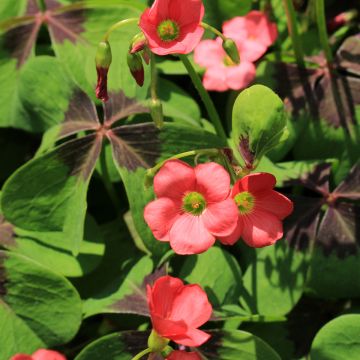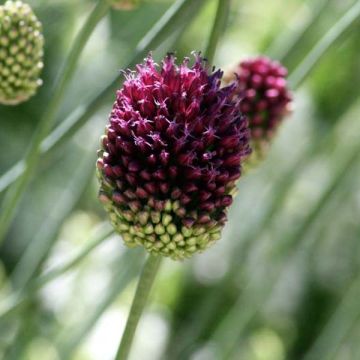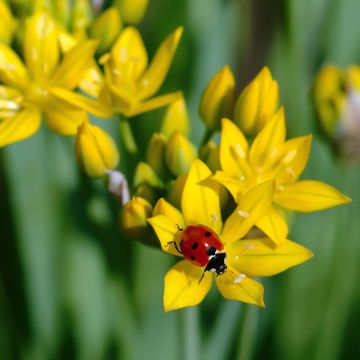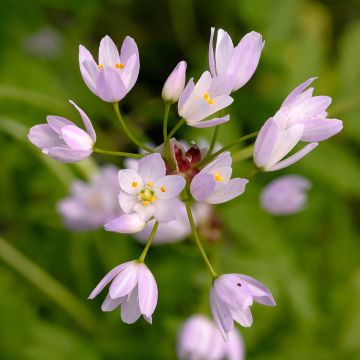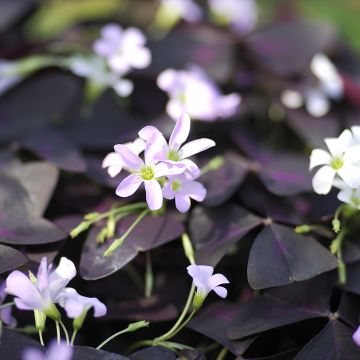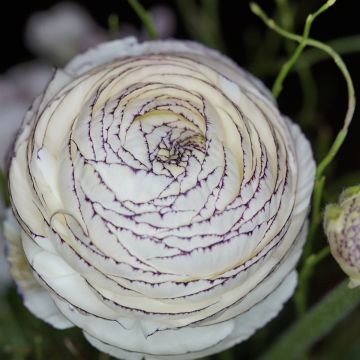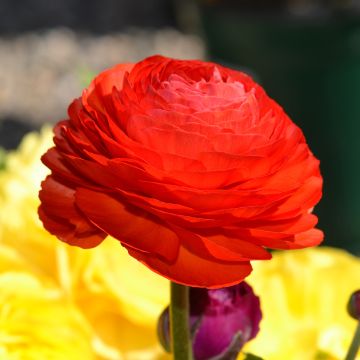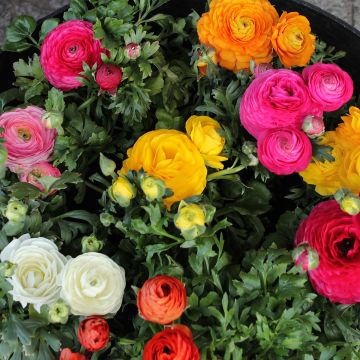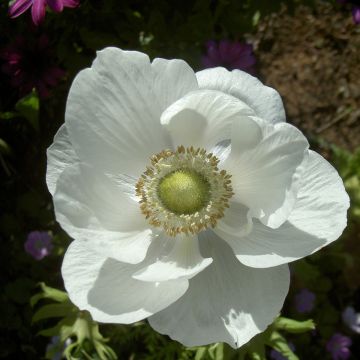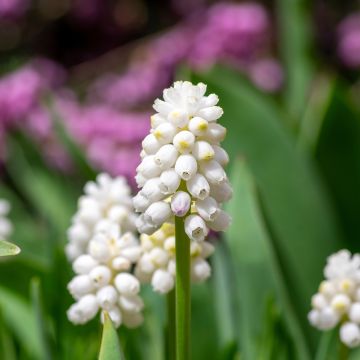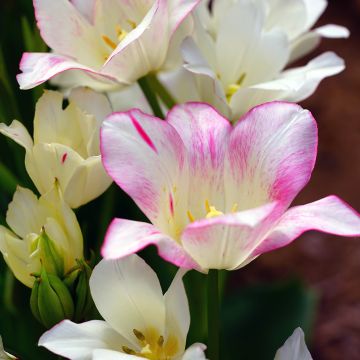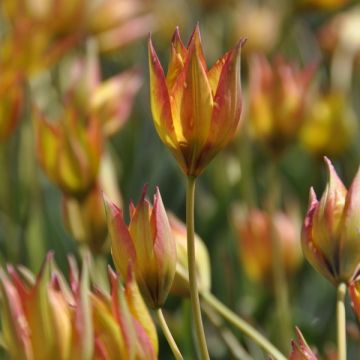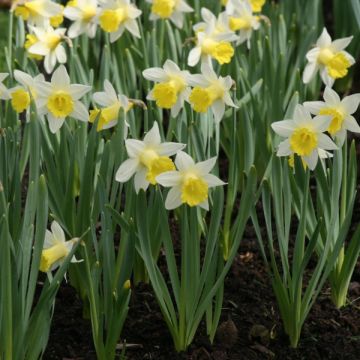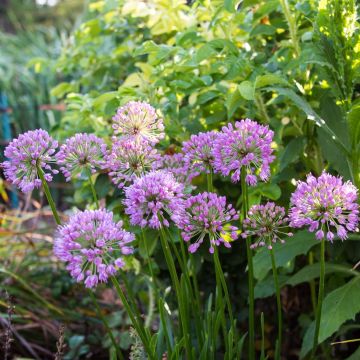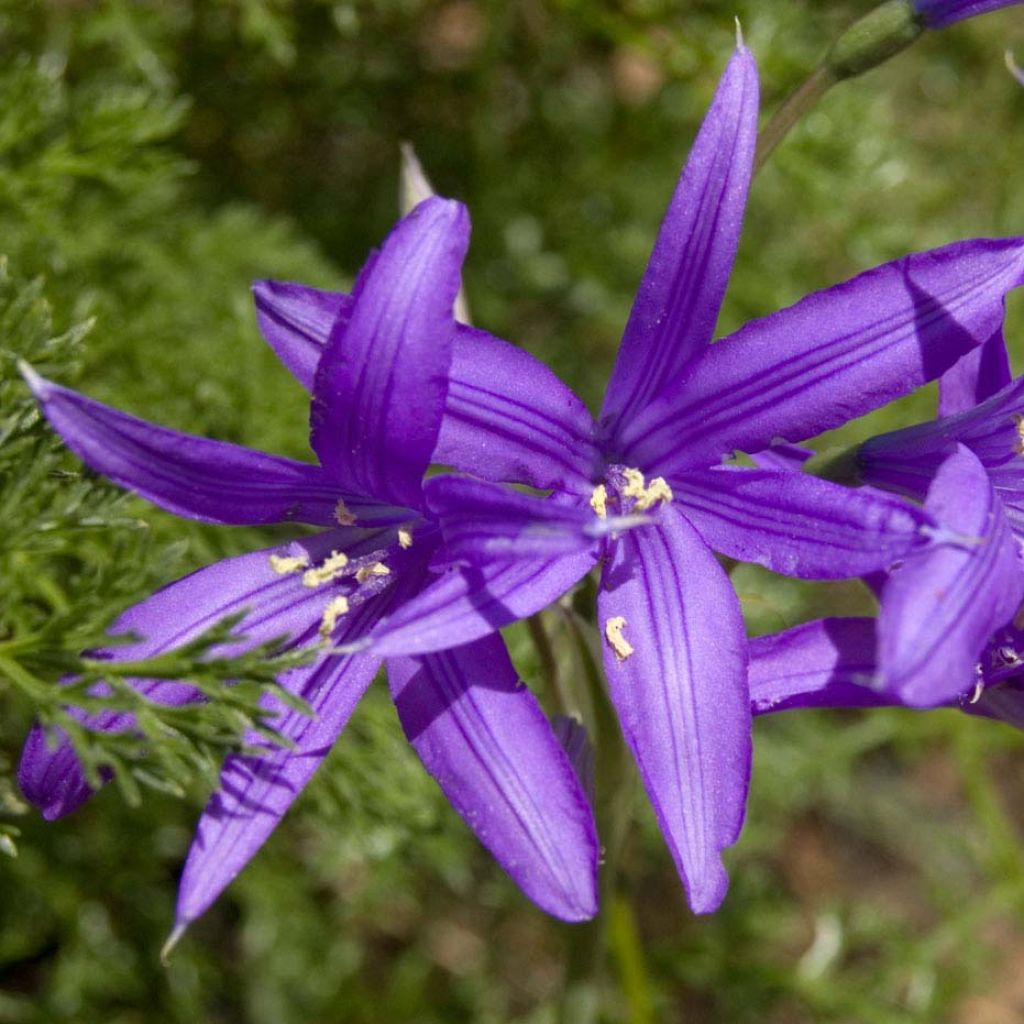

Ixiolirion tataricum - Lis de Sibérie
Ixiolirion tataricum
Ixiolirion tataricum
Tatarian Ixiolirion, Lavender Mountain Lily, Siberian Lily of the Altai
Beautiful bulbs. I would have liked to be able to order less than 30 as I have a small garden. To be continued." Texte traduit et corrigé : "Beautiful bulbs. I would have liked to be able to order fewer than 30 as I have a small garden. To be continued.
Nelly, 02/12/2020
Special offer!
Receive a €20 voucher for any order over €90 (excluding delivery costs, credit notes, and plastic-free options)!
1- Add your favorite plants to your cart.
2- Once you have reached €90, confirm your order (you can even choose the delivery date!).
3- As soon as your order is shipped, you will receive an email containing your voucher code, valid for 3 months (90 days).
Your voucher is unique and can only be used once, for any order with a minimum value of €20, excluding delivery costs.
Can be combined with other current offers, non-divisible and non-refundable.
Why not try an alternative variety in stock?
View all →This plant carries a 6 months recovery warranty
More information
We guarantee the quality of our plants for a full growing cycle, and will replace at our expense any plant that fails to recover under normal climatic and planting conditions.

Would this plant suit my garden?
Set up your Plantfit profile →
Description
The Ixiolirion tataricum is sometimes called Siberian Lily, due to its Tartar origins. This bulbous plant, native to the steppes of Central Asia, still quite rare in cultivation, is little known to Western European gardeners. It is discreetly elegant but very real in spring. A clump of long, slender leaves with a slightly silvery green colour, a slender stem carrying loose clusters of small lilies in a pretty light blue-violet, this is how it appears before its summer rest period. Its origins attest to its good adaptation to cold and dry winters, sheltered under a thick layer of snow, as well as to dry summers. Wild plant enthusiasts will adopt it in borders, flowerbeds, and sunny alpine rockeries. This bulb also allows for original flower pots and charming spring bouquets.
The Ixiolirion tataricum, formerly classified in the family Amaryllidaceae, now belongs to the much smaller family Ixioliriaceae, which only has 4 species. The etymology of the genus name Ixiolirion comes from Ixia (like the corn lily) and the Greek lirion which simply means lily, probably alluding to the (slight) resemblance of the flowers to those of Ixia. Only the species Ixiolirion tataricum is available in the horticultural market.
This bulbous perennial is native to mountainous or plain steppe regions that cover a vast territory from eastern Siberia to Central Asia, and further west and south, from Iran to Afghanistan, Iraq, and Pakistan. Each bulb, or more precisely corm, ovoid in shape, covered with a brown tunic, about 2-3cm (1in) wide, produces 3 to 8 linear and flexible leaves, gathered in a basal tuft, somewhat like grasses. They have a fairly characteristic gray-green colour. From the center of this tuft, a slender and sinuous stem emerges from April to June, depending on the climate, reaching a height of 40 to 50cm (16 to 20in). This stem bears, at its apex, a sort of umbel or cluster composed of about ten thin trumpet-shaped flowers, 4 to 5cm (2in) long, which also resemble agapanthus flowers. Each flower has 6 narrow and spread-out 'petals', ranging in colour from lavender blue to light purple. They are traversed by darker veins. The flowers are carried by peduncles of varying lengths, giving the inflorescence a pleasantly disorderly, light aspect. This flowering is followed by the formation of fruits, which are capsules releasing numerous black seeds when ripe.
If we do not encounter Siberian lilies more often in our gardens, it is undoubtedly because they have some requirements; the secret to success lies in guaranteeing them very well-drained soil, dry in winter and summer, but moist in spring when they are in growth. They will naturally find their place in an alpine rockery, or any rockery in a not too harsh Mediterranean climate. Growing them in pots allows for easy control of substrate moisture in winter and summer. In the garden, plant them in groups of 10 bulbs in borders, alongside nerines for example. Their spring flowering will also accompany that of late pink tulips and, of course, the majestic spikes of Eremurus, their steppe companions that require the same growing conditions.
Report an error about the product description
Ixiolirion tataricum in pictures


Plant habit
Flowering
Foliage
Botanical data
Ixiolirion
tataricum
Amaryllidaceae (Ixioliriacées)
Tatarian Ixiolirion, Lavender Mountain Lily, Siberian Lily of the Altai
Central Asia
Other Spring bulbs A to Z
View all →Planting and care
Plant the bulbs in open ground at a depth of 15 cm (6in), spaced 10 cm (4in) apart, from September to December in moderate climates, and in spring in regions where winters are harsh. Ixiolirion tataricum is not demanding in terms of soil type, whether it is limestone, neutral, or acidic. However, this bulb requires a well-draining substrate that does not retain water in winter or summer. In heavy soil, install a layer of gravel at the bottom of the planting hole and mix coarse sand with the soil in your garden. Plant your bulbs in a sunny location. In regions with humid winters, it is preferable to plant the Siberian lily at the base of a wall to protect it from heavy rains in winter, as well as in summer.
Under such conditions, it is grown as a perennial, with the bulbs remaining in open ground during winter in climate zones 7 to 10 (minimum temperatures ranging from -16°C (3.2°F) to 4°C (39.2°F)). Elsewhere, it is best grown as an annual or in a pot. As is often the case for plants that experience snow in winter, its cold resistance depends largely on soil drainage and the thickness of the snow cover that insulates it from the cold, as well as the moisture in winter. In our humid temperate regions, it is perfectly fine to spread a thick layer of mulch, at least 5 cm (2in) deep, on the ground, which will partially serve as an insulating layer.
It should be noted that Siberian lily bulbs planted in a hot and dry, even arid, exposure naturalize easily. Therefore, their cultivation should be quite easy in a Mediterranean climate.
Pot cultivation:
Create a highly draining mixture using river sand, garden soil, and compost. Install a drainage layer (gravel, pottery shards, clay balls, pumice) at the bottom of the pot. Plant the bulbs at a minimum depth of 8 cm (3in).
You can plant them densely if you want to grow these bulbs as annuals. To perpetuate the plant, it is necessary to provide it with a sufficient volume of soil to nourish the bulb so that it can replenish its reserves before the summer dormancy period. Water regularly in spring, stop watering in summer, and reduce watering significantly in winter.
Planting period
Intended location
Care
-
, onOrder confirmed
Reply from on Promesse de fleurs
Similar products
Haven't found what you were looking for?
Hardiness is the lowest winter temperature a plant can endure without suffering serious damage or even dying. However, hardiness is affected by location (a sheltered area, such as a patio), protection (winter cover) and soil type (hardiness is improved by well-drained soil).

Photo Sharing Terms & Conditions
In order to encourage gardeners to interact and share their experiences, Promesse de fleurs offers various media enabling content to be uploaded onto its Site - in particular via the ‘Photo sharing’ module.
The User agrees to refrain from:
- Posting any content that is illegal, prejudicial, insulting, racist, inciteful to hatred, revisionist, contrary to public decency, that infringes on privacy or on the privacy rights of third parties, in particular the publicity rights of persons and goods, intellectual property rights, or the right to privacy.
- Submitting content on behalf of a third party;
- Impersonate the identity of a third party and/or publish any personal information about a third party;
In general, the User undertakes to refrain from any unethical behaviour.
All Content (in particular text, comments, files, images, photos, videos, creative works, etc.), which may be subject to property or intellectual property rights, image or other private rights, shall remain the property of the User, subject to the limited rights granted by the terms of the licence granted by Promesse de fleurs as stated below. Users are at liberty to publish or not to publish such Content on the Site, notably via the ‘Photo Sharing’ facility, and accept that this Content shall be made public and freely accessible, notably on the Internet.
Users further acknowledge, undertake to have ,and guarantee that they hold all necessary rights and permissions to publish such material on the Site, in particular with regard to the legislation in force pertaining to any privacy, property, intellectual property, image, or contractual rights, or rights of any other nature. By publishing such Content on the Site, Users acknowledge accepting full liability as publishers of the Content within the meaning of the law, and grant Promesse de fleurs, free of charge, an inclusive, worldwide licence for the said Content for the entire duration of its publication, including all reproduction, representation, up/downloading, displaying, performing, transmission, and storage rights.
Users also grant permission for their name to be linked to the Content and accept that this link may not always be made available.
By engaging in posting material, Users consent to their Content becoming automatically accessible on the Internet, in particular on other sites and/or blogs and/or web pages of the Promesse de fleurs site, including in particular social pages and the Promesse de fleurs catalogue.
Users may secure the removal of entrusted content free of charge by issuing a simple request via our contact form.
The flowering period indicated on our website applies to countries and regions located in USDA zone 8 (France, the United Kingdom, Ireland, the Netherlands, etc.)
It will vary according to where you live:
- In zones 9 to 10 (Italy, Spain, Greece, etc.), flowering will occur about 2 to 4 weeks earlier.
- In zones 6 to 7 (Germany, Poland, Slovenia, and lower mountainous regions), flowering will be delayed by 2 to 3 weeks.
- In zone 5 (Central Europe, Scandinavia), blooming will be delayed by 3 to 5 weeks.
In temperate climates, pruning of spring-flowering shrubs (forsythia, spireas, etc.) should be done just after flowering.
Pruning of summer-flowering shrubs (Indian Lilac, Perovskia, etc.) can be done in winter or spring.
In cold regions as well as with frost-sensitive plants, avoid pruning too early when severe frosts may still occur.
The planting period indicated on our website applies to countries and regions located in USDA zone 8 (France, United Kingdom, Ireland, Netherlands).
It will vary according to where you live:
- In Mediterranean zones (Marseille, Madrid, Milan, etc.), autumn and winter are the best planting periods.
- In continental zones (Strasbourg, Munich, Vienna, etc.), delay planting by 2 to 3 weeks in spring and bring it forward by 2 to 4 weeks in autumn.
- In mountainous regions (the Alps, Pyrenees, Carpathians, etc.), it is best to plant in late spring (May-June) or late summer (August-September).
The harvesting period indicated on our website applies to countries and regions in USDA zone 8 (France, England, Ireland, the Netherlands).
In colder areas (Scandinavia, Poland, Austria...) fruit and vegetable harvests are likely to be delayed by 3-4 weeks.
In warmer areas (Italy, Spain, Greece, etc.), harvesting will probably take place earlier, depending on weather conditions.
The sowing periods indicated on our website apply to countries and regions within USDA Zone 8 (France, UK, Ireland, Netherlands).
In colder areas (Scandinavia, Poland, Austria...), delay any outdoor sowing by 3-4 weeks, or sow under glass.
In warmer climes (Italy, Spain, Greece, etc.), bring outdoor sowing forward by a few weeks.































